Kia XCeed urban crossover utility vehicle details and pictures
This is a brand new Kia that might not come to Malaysia due to its asking price
This is brand new product from Kia Motors and the company has just invented a brand new segment for this product. They are calling it ‘urban crossover utility vehicle (CUV) which they say combines a compact SUV practicality with a crossover sporty packaging and with the engaging handling of a hot hatchback.
A sporty alternative to traditional SUVs, the new CUV nevertheless offers comparable levels of space for occupants and luggage. The Kia XCeed engages drivers with its sporty handling and a comfortable, assured ride, while providing a more commanding view of the road ahead than a conventional hatchback.
The Kia XCeed’s suite of advanced safety, connectivity and infotainment features make it one of the most high-tech cars in the CUV class. Powered by a range of fast-revving, turbocharged engines, it is also one of the most efficient.
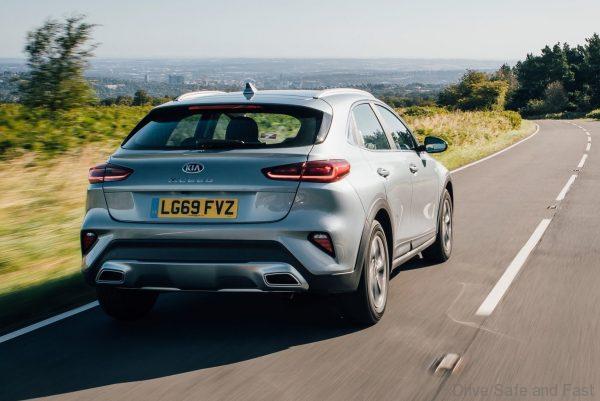


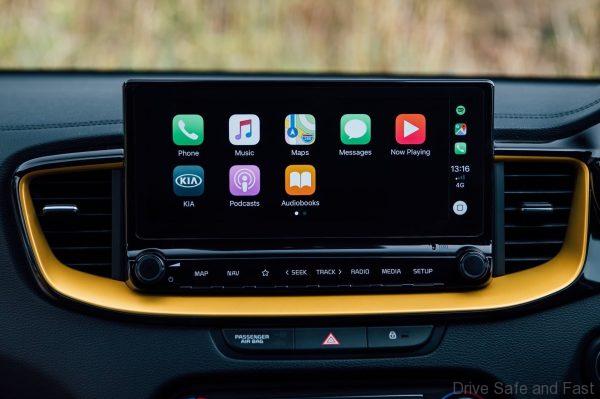
Press Release:
DESIGN AND PACKAGING
Stylish, expressive and modern in design, the Kia XCeed represents a sporty alternative to traditional SUVs. A product of the brand’s European design centre in Frankfurt, Germany, the creation of the Kia XCeed has taken place under the direction of Gregory Guillaume, Vice President of Design for Kia Motors Europe.
The Kia XCeed is more emotional and dynamic in format and appearance than its taller rivals, while offering something different to the other models in the Ceed range. The only body panels carried over from its five-door hatchback sibling are the front doors.
In profile, the car’s relatively long bonnet flows into the A-pillars anchored aft of the front wheels, lending the car a sporty, swept-back silhouette. While the wheelbase remains the same as other models in the Ceed line-up (2,650mm), the Kia XCeed’s front and rear overhangs are extended over the five-door hatchback model by 25mm at the front (to 905mm) and 60mm at the rear (to 840mm).
A steeply-angled fastback tailgate, and a rear ‘deck’ trailing edge which sits 60mm higher than that of the Ceed five-door hatchback, enhances the CUV’s dynamic, coupé-like, cab-rearward appearance. The Kia XCeed sits on a choice of 16- or 18-inch alloy wheels, shod with high-grip 205/60 R16 or 235/45 R18 tyres.
The front and rear of the car also represent a departure from the ‘face’ of the conventional Ceed model family, differentiating the Kia XCeed from its stablemates. With a 1,826mm body (26mm wider than the Ceed five-door), the CUV presents a more assertive face, with a more prominent grille and larger lower air intake. The headlamps are newly designed, with the Ceed’s ‘ice cube’ LED light signature sitting within a more angular shape, topped by a slim turn signal that flows back over the wheel arches.
At the rear, new tail lights emit a slim, highly technical LED light signature which, when viewed from certain angles, appears to spear forward into the shoulders of the car. The heavily creased lines running horizontally across the tailgate and rear bumper give the car a wider, more stable posture.
The car’s elevated ride height and body also present the same robust image that attracts buyers to the other SUVs in Kia’s product portfolio. The Kia XCeed’s ground clearance is 172mm on 16-inch wheels (grade ‘2’) and 184mm on 18-inch wheels (‘3’ and ‘First Edition’ models), a rise of up to 44mm over the Ceed five-door hatchback. Wheel arch and side sill cladding and silver roof rails lend the car a tougher, SUV-like presence, with the metallic valance in the rear bumper enhancing this effect.
The all-new model will be offered in a choice of up to seven paint finishes, with a vibrant new Quantum Yellow shade that is unique to the ‘First Edition’ within the Kia XCeed range.

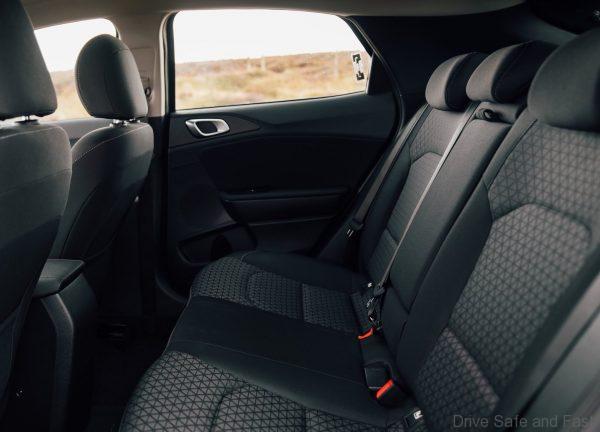

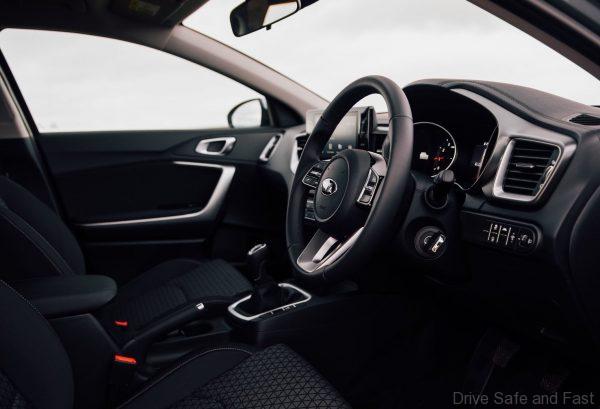
Driver focused cabin
Inside, the Kia XCeed carries over the contemporary cabin architecture of its Ceed stablemates, with a sculptured centre console oriented slightly towards the driver. With a lower hip point than a taller SUV, and raised ground clearance over a conventional hatchback, the Kia XCeed provides drivers with a sportier driving position allowing a better view of the road ahead.
A ‘floating’ touchscreen infotainment system stands proud of the dashboard, while the lower portion of the instrument panel provides a set of touch-sensitive buttons, dials and switches to control audio volume, heating and ventilation. Highly ergonomic in its layout and functionality, these controls have been designed to enable drivers to make quick changes to the cabin environment without taking their eyes off the road for any longer than necessary.
The interior is finished in sophisticated soft-touch materials throughout, with a satin chrome dashboard trim, presenting a refined, upscale ambience. Buyers can choose from a range of black premium cloth on grade ‘2’ and black cloth and faux leather with level ‘3’. Unique to the Kia XCeed ‘First Edition’ is a new yellow colour pack for the interior, with black upholstery contrasted with vibrant yellow stitching for seats and doors, yellow seat piping, and a blend of gloss black and metallic yellow highlights throughout the cabin.
Cabin and storage space of an SUV in a sportier, more compact body
The Kia XCeed is designed to achieve the cabin and storage space of an SUV in a sportier body with a more compact footprint. Sitting directly between the Ceed five-door hatchback and the Sportage, the XCeed still manages to provide comparable interior space and luggage capacity to Europe’s best-selling SUVs.
With a total length of 4,395mm, the Kia XCeed is 85mm longer than the Ceed five-door hatchback and 90mm more compact than the Sportage. Its maximum roof height of 1,495mm also means it stands 48mm above the Ceed and 150mm below the Sportage, providing drivers with a lower centre of gravity than its taller sibling and an elevated driving position over the conventional Ceed.
Based on the Ceed, one of the most spacious vehicles in the compact class, the Kia XCeed offers generous interior space for front and rear occupants. With the hip point for each seat raised by up to 44mm over the Ceed, it is easier for occupants to step in or out. Meanwhile, the half-moon-shaped glass area and fastback roofline provide rear passengers with a brighter, airier ambience and more headroom than other rivals in the compact crossover class.
With the car’s longer rear overhang creating a longer boot, luggage capacity for the Kia XCeed is rated at 426 litres (VDA), 31 litres more than the Ceed and only slightly less than the best-selling compact SUV in Europe. With the rear seats folded down, luggage capacity grows to 1,378 litres. Versatility is also assured thanks to the available 40:20:40 split-folding rear seats, Smart Power Tailgate, and two-step boot floor that can be moved up or down to provide either more space or a hidden underfloor storage compartment.


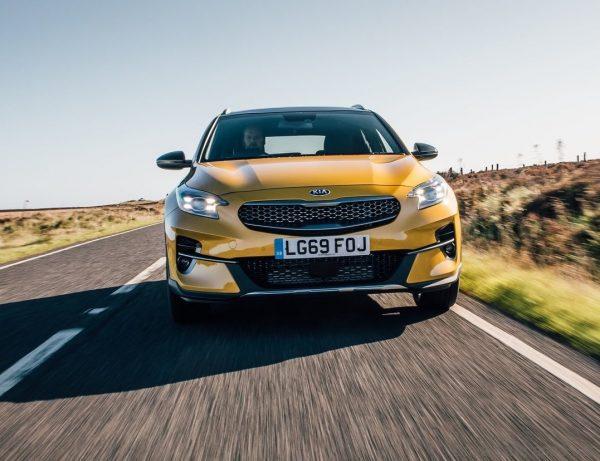
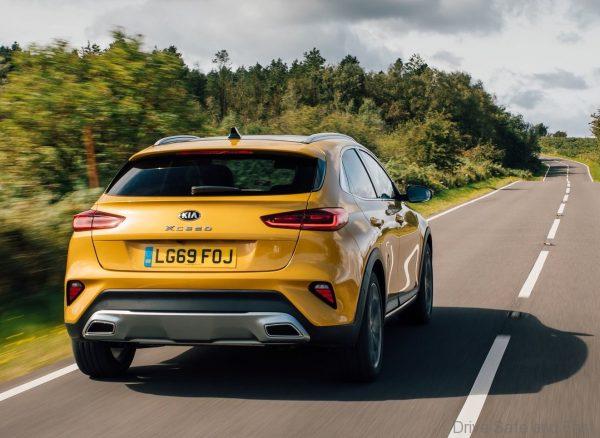
DYNAMICS
The brand’s European engineering teams were tasked with honing the suspension and steering of the Kia XCeed to deliver a mature ride and engaging handling character in all conditions. Subjected to a dedicated development regime, the new car has been driven across a wider range of road surfaces than any previous European-developed Kia vehicle.
Prototypes have been validated in all weather conditions, on alpine passes and high-speed motorways, in bustling city centres, and along narrow country lanes. With testing taking place in Germany, Spain, Sweden, the UK, and a host of other nations, the handling character of the new Ceed crossover is truly European.
The Kia XCeed offers drivers a unique ride and handling character, with its own suspension tuning and componentry not found in other Ceed models. Despite its elevated ride height, the Kia XCeed is more engaging to drive than a typical family SUV due to its bespoke suspension tuning, more compact exterior dimensions, lower centre of gravity and reduced overall mass.
Uniquely in the Ceed model line-up, the Kia XCeed features hydraulic rebound stoppers, fitted as standard to the front axle of all models. The rubber bump-stop floats in hydraulic fluid within the shock absorbers, providing a highly compliant ride over poor surfaces. The car has been designed to absorb even large suspension shocks with a smooth and progressive response, preventing the body from bouncing as the suspension settles itself after rapid compression. It also contributes towards more responsive steering and improved overall body control, while reducing noise from the suspension over bumps.
With the exception of the new hydraulic rebound stoppers, the hardware of the new model’s fully independent suspension remains identical to that of the Ceed hatchback, ProCeed shooting brake and Ceed Sportswagon. However, with ground clearance elevated by up to 44mm over the standard Ceed (depending on wheel size), Kia’s engineers have softened the front and rear spring rates up to seven and four per cent, respectively, depending on the weight of different engines over the front axle. This delivers greater comfort and stability in all conditions. Cruising comfort is also enhanced by the adoption of a new dynamic damper for the rear cross-member, further quelling road noise and structural vibrations.
The steering hardware remains unchanged over the Ceed, though the electronic control unit (ECU) governing the power steering motor has been retuned to deliver a quicker initial response to the driver’s steering inputs. The result is that drivers can enjoy similarly quick steering responses and comparable levels of body roll to the standard Ceed five-door hatchback. The level of assistance provided by the power steering motor has also been boosted, delivering subtly lighter overall steering to reduce driver fatigue on longer journeys and at low speeds.
Matched to a choice of 16- or 18-inch alloy wheels, the Kia XCeed offers drivers high levels of grip and an engaging and progressive handling character.
Kia’s Drive Mode Select system enables drivers to adjust steering weight, throttle pedal responses, and, for models equipped with dual-clutch transmissions, gear shift responses. With a choice of ‘Normal’ and ‘Sport’ modes, drivers can select Sport mode to subtly enhance acceleration response times and adapt the steering to offer additional weight and more decisive responses to driver inputs. Normal mode enables the driver to maximise the potential for greater fuel efficiency and realise the Kia XCeed’s relaxed cruising gait.




ENGINES
The Kia XCeed is powered by a range of fast-revving, turbocharged engines, giving buyers several choices to meet every driving need.
Two Turbocharged Gasoline Direct injection (T-GDi) engines are on offer. The three-cylinder 1.0-litre T-GDi engine produces 118bhp and 172Nm torque, while the four-cylinder 1.4-litre T-GDi engine made its debut in the new Ceed and produces 138bhp and 242Nm torque.
The Kia XCeed is also available with a choice of two Smartstream power units – the cleanest diesel engines ever produced by the brand, and the most fuel efficient in the range. The all-new 1.6-litre ‘Smartstream’ diesel engine made its first appearance in the Ceed, before being rolled out to other models in the Kia range, including the Optima, Stonic and Sportage.
Designed to go beyond the stricter limits laid down by the latest Euro 6d TEMP emissions standard, the ‘Smartstream’ 1.6-litre CRDi (Common-Rail Direct injection) uses Selective Catalytic Reduction (SCR) active emissions control technology to regulate emissions. The 1.6-litre Smartstream engine is offered with either 114 or 134bhp and both powerplants are mated to a six-speed manual transmission.
All engines are paired with a six-speed manual gearbox, with the 1.4 T-GDi unit optionally available with a seven-speed dual-clutch auto transmission. Intelligent Stop & Go is fitted as standard to all models.
A low-emissions plug-in hybrid powertrain will be launched into the Kia XCeed range in early 2020, combining an 8.9 kWh lithium-polymer battery pack, a 44.5 kW electric motor, and an efficient 1.6-litre ‘Kappa’ four-cylinder GDI engine. Paired with a six-speed dual-clutch auto transmission (6DCT), the powertrain transmits up to 139 bhp (141 ps) and 265 Nm to the front wheels. The Kia XCeed Plug-in Hybrid is expected to offer an all-electric range of around 60 kilometres depending on wheel size. This will enable drivers to complete the majority of daily drives and short commutes on electric power alone. CO2 emissions for the Kia XCeed Plug-in Hybrid will be announced prior to start-of-sales once the homologation process is complete.

The petrol engines
The petrol engines are Turbocharged Gasoline Direct-injection (T-GDi) units from Kia’s Kappa family. The 1.0-litre engine is backed up by a 138bhp 1.4-litre version.
The 1.0-litre T-GDi engine fits in perfectly with Kia’s downsizing strategy by delivering exceptional power and torque from only three cylinders and a cubic capacity of just 998cc, thanks to turbocharging and direct injection. The T-GDi unit sprays a fine mist of fuel directly into the cylinders through a high-pressure (up to 200 bar) injection system, resulting in highly efficient combustion. Direct injection with turbocharging also helps to boost low-speed response and driveability.
The key targets were instantaneous response, high combustion efficiency and exemplary torque across a wide portion of the rev band. The 1.0-litre 12-valve T-GDi engine develops 118bhp at 6,000rpm and 172Nm of torque at 4,000rpm, and features a number of innovative technical solutions. There are laser-drilled injectors with six holes laid out in a pyramid shape so that the fine mist of fuel is spread evenly throughout the cylinders. A straight air intake port ends in a sharp air intake throat, reducing air resistance at all stages of the process. This improves cylinder tumble flow for faster, more efficient combustion while suppressing engine knocking.
There is a single-scroll turbocharger paired with an electric wastegate motor. This improves turbocharger performance while scavenging clean air for the engine to re-use for combustion. At the same time, it allows the wastegate to open to improve the flow of spent exhaust gases. It is an innovative system which allows higher low-end torque, more immediate response at any throttle opening and improved fuel economy at high engine loads.
The engine is fitted with an integrated exhaust manifold in a one-piece casting, improving sealing, reducing weight and lowering exhaust gas temperatures. Lower temperatures result in cleaner emissions by allowing the catalytic converter to operate more effectively. Engine temperatures are closely regulated by a dual-thermostat split cooling system, which allows the block and cylinder heads to be cooled independently. The main thermostat controls the flow of coolant to the cylinder heads above 88ºC to reduce knocking, while the engine block thermostat shuts off coolant flow above 105ºC to reduce friction and improve efficiency.
There is continuously variable valve timing on the inlet and exhaust sides, electronic throttle control and light, low-friction moving parts. The crankshaft is offset from the centre line to aid smoothness. As a result of these detailed engineering measures, the T-GDi engine exhibits minimal throttle lag – the delay between the driver pressing the accelerator and the turbocharger delivering boost. The turbocharger is integrated within the exhaust manifold.
For added durability, the cylinder block has been heat-treated and the crankshaft, pistons and connecting rods have been strengthened.
The 1.0 T-GDi engine accelerates the Kia XCeed from standstill to 60mph in 10.9 seconds, on the way to a top speed of 115mph. CO2 emissions are from 124g/km, depending on version, with 45.6mpg possible using the combined economy cycle.
The ‘Kappa’ 1.4-litre T-GDi power unit produces 138bhp, and the engine’s turbocharger ensures a wide torque band, making it responsive in a wider range of driving conditions – while also reducing emissions. 242Nm torque is available from 1,500 to 3,200rpm, with emissions (on the WLTP cycle converted back to NEDC 2.0) as low as 134g/km when fitted with the seven-speed Dual-Clutch auto Transmission. Manual models emit 142g/km. Acceleration to 60mph is completed in just 9.1 seconds (9.2 seconds on DCT versions), with a top speed of 124mph for both manual and DCT versions.
Both 1.0- and 1.4-litre T-GDi engines are fitted with a gasoline particulate filter to further reduce tailpipe emissions, ensuring the Kia XCeed goes beyond the requirements of the Euro 6d TEMP standard.
All-new ‘Smartstream’ diesel engines
The Kia XCeed is also available with Kia’s all-new ‘Smartstream’ diesel engine. Designed to go beyond the stricter limits laid down by the latest Euro 6d TEMP emissions standard, the 114bhp 1.6-litre CRDi (Common-Rail Direct injection) uses Selective Catalytic Reduction (SCR) active emissions control technology to regulate emissions. The 114bhp 1.6-litre diesel powerplant in the ‘2’ grade produces 280Nm of torque, is paired with a manual transmission and emits just 109g/km (combined, WLTP, converted back to NEDC 2.0). It achieves a maximum speed of 118mph, while acceleration to 60mph takes 11.0 seconds. Fuel economy on the new WLTP combined scale is 52.3mpg.
The Kia XCeed’s 1.6-litre ‘U3’ diesel engine features a range of components designed to improve sound insulation and refinement. These include a timing belt cover and more insulated cylinder block cover, engine undercover, and oil pan cover.
Available exclusively with the ‘3’ model, a more powerful 134bhp 1.6-litre CRDi engine is available, paired with a six-speed manual transmission. With 280Nm on tap, it manages to sprint to 60mph in 10.2 seconds, with a top speed of 122mph. With CO2 emissions of 116g/km, fuel economy on the new WLTP combined cycle is 53.3mpg.
Transmissions
Apart from the 1.4-litre T-GDi powerplant, where a seven-speed dual-clutch auto (7-DCT) automatic transmission is available as an option, all other engines come with a six-speed manual gearbox as standard.
The dual-clutch automatic transmission has been developed in-house with the aim of enhancing fuel efficiency while delivering the comfort and smoothness of a torque converter transmission in automatic mode with the sportiness of a manual when the driver chooses to take control of gear changes.
The manual gearboxes in the Kia XCeed are six-speed units with a wide spread of ratios and long final drives to help bring down fuel consumption and CO2 emissions. They are light and compact with a short, slick shift.
Intelligent Stop and Go (ISG)
All versions of the Kia XCeed are fitted with Kia’s Intelligent Stop and Go (ISG) stop-start system to reduce fuel consumption and emissions in traffic. As the name implies, this switches off the engine when the car comes to rest and the driver puts the gear stick into neutral and releases the clutch pedal, or brings the car to a stop with automatic transmission. The engine restarts instantly as soon as the clutch pedal is partially engaged again, or the driver releases the brake pedal in automatics. This feature means the car is not using fuel and no emissions are released when it is at rest.
ISG consists of crankshaft position, battery and vacuum sensors plus neutral, on-off and clutch switches that feed into an electronic control unit. This operates the ISG starter, intelligent alternator and cluster. The air conditioning units and bonnet switch also feed into the ISG ECU.
The crankshaft position sensor measures the crankshaft angle during engine run-out and monitors it while the vehicle is stopped, ensuring the starter is activated for as short a time as possible by optimising cranking and combustion. The battery sensor monitors battery condition and temperature, while the clutch and neutral switches recognise when drivers wish to continue driving and ensure the engine is started. There is a brake booster pressure sensor to make sure the engine continues to operate if brake boost falls too low.
A new heavy-duty maintenance-free Absorbent Glass Mat (AGM) battery delivers the power necessary to run the system, and intelligent alternator management reduces drain on the battery while accelerating and recharges the battery during coasting and braking. The system has been engineered not to stop the engine during warm-up after a cold start or if the air conditioning is working hard. Drivers can also manually turn off ISG through a switch next to the gear stick.
TECHNOLOGY
The Kia XCeed’s suite of advanced safety, connectivity and infotainment technologies make it one of the most high-tech, comprehensively equipped cars in its class. The range of features are designed to make driving safer and less stressful and provide total ease of operation.
The Kia XCeed is among the first vehicles in Europe to offer the brand’s innovative UVO Connect telematics system, designed to bring driving into the digital era. UVO Connect links drivers to the world around by providing invaluable information via the in-car touchscreen and on their smartphone. Featuring Kia Live services and housed within the 10.25-inch TFT LCD widescreen that comes as standard on ‘3’ and ‘First Edition’ models, the system uses its own eSIM chip to retrieve and update live data during a drive. This includes live traffic information, weather forecasts, points of interest, and details of potential on- and off-street parking (including price, location and parking availability). The second element of the UVO Connect diagnostic data about owners’ cars and the trips they take, enables drivers to send route directions to their car before a journey, and enables them to check the location of their vehicle at any time.
The 10.25-inch touchscreen satellite navigation system features Bluetooth® multi-connection as standard, enabling occupants to connect two mobile devices at once, as well as Apple CarPlay™ and Android Auto™. Its advanced split-screen functionality lets users control or monitor numerous vehicle features at the same time, customising the screen to display up to three applications simultaneously, among a series of available widgets. This enables the driver to have a single display (such as navigation) or combine different elements on-screen at the same time. This means the driver can follow navigation directions while passengers choose their favourite songs or check the weather forecast. An 8.0-inch audio display touchscreen system is standard on ‘2’ models, offering Android Auto™, Apple CarPlay™ and infotainment functionalities.
Other technologies designed to enhance the comfort and enjoyment of each journey include a JBL Premium audio system with Clari-Fi technology and heated front and rear seats (standard on the ‘First Edition’), as well as dual-zone air-conditioning, heated electric folding door mirrors, heated steering wheel and heated front seats on both the ‘3’ grade and ‘First Edition’ model.
The Kia XCeed will also be available with the brand’s first fully digital 12.3-inch Supervision driver instrument cluster on ‘First Edition’ models, designed to deliver information as clearly as possible. With a high-definition display, the digital cluster replaces the conventional speedometer and tachometer dials found currently in the brand’s passenger cars. Its single, seamless display incorporates pin-sharp digital dials for vehicle and engine speeds. A multi-function display between the dials displays turn-by-turn navigation instructions, audio information and in-depth trip information, as well as vehicle diagnostics alerts, and pop-up notifications linked to the car’s various active safety and driver assist technologies. It replaces the physical dials and 3.5-inch mono TFT-LCD screen on ‘2’ models and the 4.2-inch colour TFT-LCD screen on ‘3’ versions.
SAFETY
The Kia XCeed provides access to a wide range of active driver assist and safety technologies. These include Smart Cruise Control with Stop & Go, Blind-spot Collision Warning, Forward Collision Warning with pedestrian and cyclist detection, Intelligent Speed Limit Warning, Smart Parking Assist, Lane Keeping Assist and High Beam Assist.
The Kia XCeed’s Driver Attention Warning advises drivers to take a break if the system detects signs of fatigue. Finally, Lane Following Assist (LFA) is also available which controls acceleration, braking and steering. LFA can track vehicles and road markings ahead to keep the car in-lane and a safe distance from any cars in front.
The Kia XCeed is equipped as standard with Vehicle Stability Management. This aids stability when braking and cornering by controlling the car’s Electronic Stability Control if it detects a loss of traction.